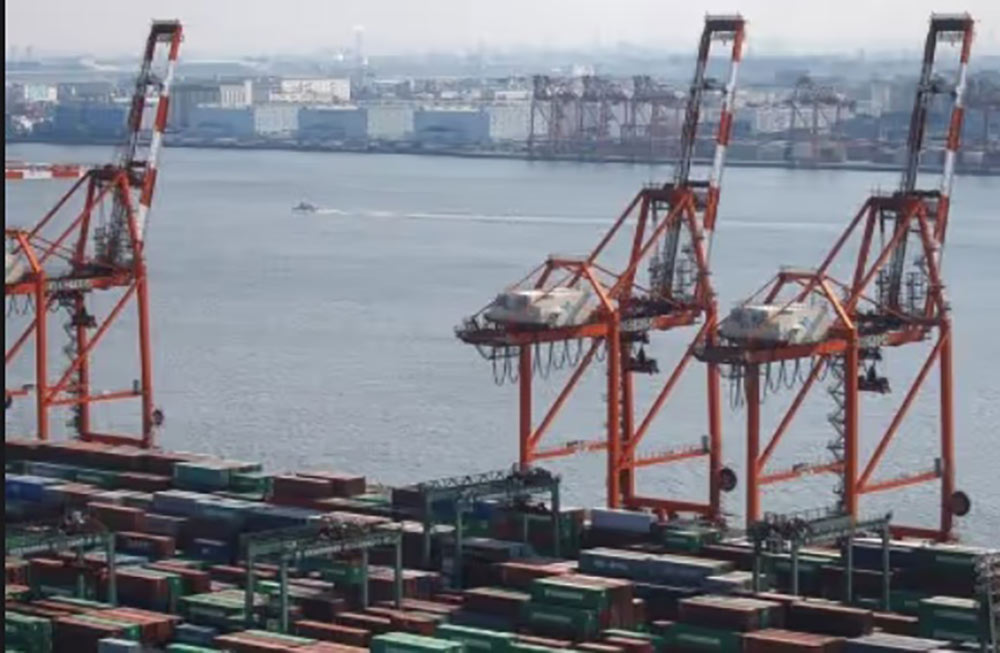TOKYO- Japan’s imports in October surged by more than half from a year earlier, dwarfing growth in exports and enlarging a trade deficit that has weighed heavily on the yen.
The trade gap is therefore worsening the pain felt by households struggling to make ends meet amid currency-driven price hikes of imported goods and by import-reliant businesses facing difficulty in passing cost rises on to customers.
At 9.00 trillion yen, Japan’s exports in October were up 25.3 percent on a year before, led by shipments of cars, chips and electronics parts, according to government trade data. It was the 20th consecutive month to show annual export growth and followed a 28.9 percent gain seen in September.
Imports jumped 53.5 percent from a year before to 11.16 trillion yen in their 21st month of annual gains, driven by crude oil, coal and liquefied natural gas and resulting in a 2.16 trillion yen ($15.50 billion) trade deficit, a record for the month of October.
The September trade deficit was 2.09 trillion yen.
The world’s third-largest economy has depended on exports of processed goods such as cars and electronics for growth over the past few decades. Now Japan’s policymakers are concerned more about the impact of surging imports on its resource-poor economy, given the sharp yen declines.
“We expect Japan will continue to log a trade deficit going forward,” said Koya Miyamae, senior economist at SMBC Nikko Securities.
“The global economic slowdown could weaken the pace of export increases, while impacts from a weak yen and higher commodity prices on imports will continue.”
By destination, Thursday’s trade data showed US-bound exports were 36.5 percent higher in October than a year before, driven by cars and motors.
Exports to China, Japan’s number-one trading partner, advanced 7.7 percent in October, led by cars and audio equipment. Annual growth in September had been 17.1 percent, however. The slowdown suggested China’s zero-COVID measures had weakened demand, affecting not only Japanese shipments but potentially the global economy, too.
Government data showed on Tuesday that Japan’s economy had shrunk in July-September for the first time in a year as imports outpaced exports, knocking off substantial portion of gross domestic product.
Japan’s current account suffered the biggest year-on-year decline in the first half of this fiscal year since the 2008 global financial crisis, as the trade balance fell into deficit due to a weakening yen and rising global commodity prices.
In the April-September period, the current account surplus more than halved from a year earlier, falling 58.6 percent to 4.8458 trillion yen ($33.36 billion), data from the Ministry of Finance showed on Wednesday.
That was the biggest fall since the second half of fiscal 2008 and the second-largest since comparable data became available in 1985.
The current account surplus fell to a level last seen in 2014 when rising oil prices tipped Japan’s trade balance into the red, the data showed.
Japan’s current account surplus has long been regarded as a sign of export might and a source of confidence in the safe-haven yen, but the account has occasionally fallen into deficit on a monthly basis in recent years.
For the month of September, Japan’s current account surplus stood at 909.3 billion yen, above economists’ median forecast for a surplus of 234.5 billion yen in a Reuters poll.
While a weakening yen makes imports more expensive, it also makes exports cheaper for foreign buyers. But the boost to exports from a weaker yen will likely be more limited than expected as firms have shifted their production abroad over the past three decades. – Reuters





